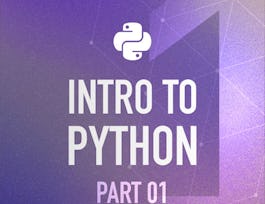The Network infrastructure industry has undergone a significant transformation in recent years, with an increasing need for automation due to factors such as a demand for faster and more reliable network deployments. Therefore, there is a growing need for network engineers skilled in automation and programmability.



Introduction to Network Automation
This course is part of Network Automation Engineering Fundamentals Specialization

Instructor: Cisco Learning & Certifications
Sponsored by IEM UEM Group
6,542 already enrolled
(55 reviews)
Recommended experience
Skills you'll gain
- Package and Software Management
- Linux
- Network Infrastructure
- Network Architecture
- Network Engineering
- IT Automation
- Application Lifecycle Management
- Scripting
- IT Infrastructure
- Python Programming
- Linux Administration
- Information Technology
- Computer Science
- Systems Administration
- Scripting Languages
- General Networking
- Network Administration
- Computer Networking
- Network Planning And Design
- IT Management
Details to know

Add to your LinkedIn profile
12 assignments
See how employees at top companies are mastering in-demand skills

Build your subject-matter expertise
- Learn new concepts from industry experts
- Gain a foundational understanding of a subject or tool
- Develop job-relevant skills with hands-on projects
- Earn a shareable career certificate


Earn a career certificate
Add this credential to your LinkedIn profile, resume, or CV
Share it on social media and in your performance review

There are 3 modules in this course
In this module, we will review the topics and what you will learn in this course.
What's included
1 video2 readings
Network operations have not changed in decades. For years, the console, Telnet, and Secure Shell (SSH) along with the CLI were the primary methods for managing and operating networks of any size. With the rise of programmatic interfaces on network devices and the growing need for enhanced reliability, assurance, and predictability, network operations are now in the midst of a radical shift in how devices are deployed and operated. This section reviews how devices have been managed historically and provides a glimpse into the future of network operations.
What's included
7 videos14 readings7 assignments
Network automation is the future of network operation. Today, network engineers need to know how to interact with their network devices using application programming interfaces (APIs) and programmatic interfaces, and at a minimum, they must understand some fundamentals of coding. In this section, you will explore a programming language that is widely used in network automation—Python. You will start by learning different data types that Python supports, and then learn the differences between modules and packages and how to use them to your benefit. Next, you will learn about a module that lets you interact with devices with code. Finally, you will create your own module and interact with the code inside it.
What's included
6 videos7 readings5 assignments
Instructor

Offered by
Why people choose Coursera for their career




Learner reviews
55 reviews
- 5 stars
80%
- 4 stars
14.54%
- 3 stars
1.81%
- 2 stars
0%
- 1 star
3.63%
Showing 3 of 55
Reviewed on Oct 22, 2024
liked it so much, very intuitive and comprehensive :)
Reviewed on Aug 8, 2023
A lot of good information, but some questions in the quizzes/tests are either wrong or are not discussed in the course material.
Recommended if you're interested in Information Technology

Scrimba

University of Colorado Boulder

Ball State University

Open new doors with Coursera Plus
Unlimited access to 10,000+ world-class courses, hands-on projects, and job-ready certificate programs - all included in your subscription
Advance your career with an online degree
Earn a degree from world-class universities - 100% online
Join over 3,400 global companies that choose Coursera for Business
Upskill your employees to excel in the digital economy



